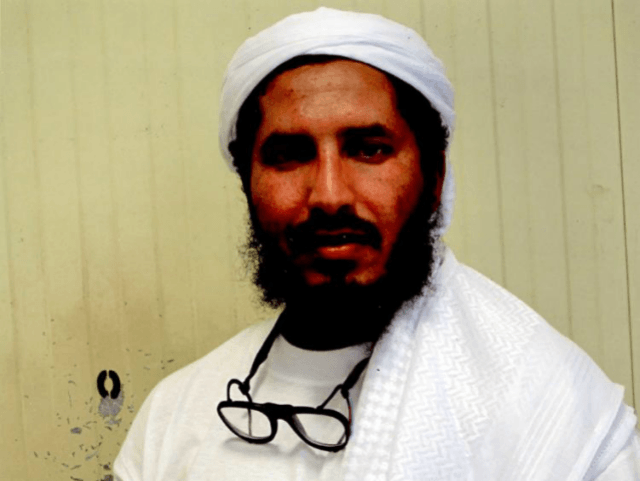U.S. Donald Trump’s administration waived a recent Pentagon policy to allow an admitted al-Qaeda terrorist to take his artwork with him when released to Saudi Arabia from the American military prison in Guantánamo Bay, Cuba, early this month.
The Miami Herald reports:
When the U.S. released an admitted al-Qaida terrorist to Saudi Arabia earlier this month, the Trump administration both made good on an Obama era commitment to transfer him and waived a recent Pentagon policy prohibiting the release of artwork made by captives at the offshore prison.
The Saudi aircraft that fetched Ahmed al Darbi, 43, also carried dozens of pieces of artwork created by the Guantánamo prisoner who turned government informant.
On May 2, the Pentagon announced the Trump administration’s first Guantánamo detainee transfer, noting: “Darbi will serve out the balance of his 13-year sentence in Saudi Arabia.”
Some news reports have noted that Saudi Arabia’s jihadi rehabilitation facilities provide luxury treatment to members of al-Qaeda, Taliban, and other terrorists taken there.
Darbi’s volunteer attorney Ramzi Kassem told the Herald that the admitted terrorist is expected to serve out the remainder of his 13-year sentence that started in 2014 in a Saudi rehabilitation center where a “counseling program for returning prisoners features art therapy quite prominently.”
“The artwork produced there is proudly displayed by Saudi authorities, with no threats to burn or destroy it, to my knowledge,” Kassem added.
The Miami Herald reveals that Darbi was permitted to take “dozens” of his art pieces, noting that exact number is unknown.
“Darbi was allowed to take as much of his art as he wanted,” U.S. Navy Cmdr. Anne Leanos, a spokeswoman for the Guantánamo prison commonly known as Gitmo, told the Herald, adding that staff members “packaged the art in preparation for the transfer and delivered the art to the aircraft crew as Darbi boarded the flight.”
Navy Cmdr. Sarah Higgins, another spokeswoman, acknowledged that the chief war crimes prosecutor, Army Brig. Gen. Mark Martins, supported the move to waive the Pentagon policy that prohibits the release of artwork made by detainees at Gitmo.
“Based on a request from the chief prosecutor, and due to al-Darbi’s cooperation, the detainee’s artwork was also transferred,” she told the Herald.
In October 2017, the U.S. Department of Defense (DOD) declared Gitmo prisoners’ creations to be American government property and stopped all releases.
The practice of granting Gitmo prisoners art privileges was a standard policy during the Obama administration. That stopped when Pentagon found a New York exhibit at the John Jay College of Criminal Justice was selling some works of art created by released detainees.
Darbi’s release reduced the Gitmo prison’s population to 40 — all reportedly sent to the facility by former President George W. Bush’s administration.
The recent transfer came despite President Donald Trump’s campaign pledge to fill the prison with “some bad dudes.”
It also “appeared to reverse an inauguration month vow to halt detainee releases while making good on an Obama administration plea deal,” the Herald notes.

COMMENTS
Please let us know if you're having issues with commenting.